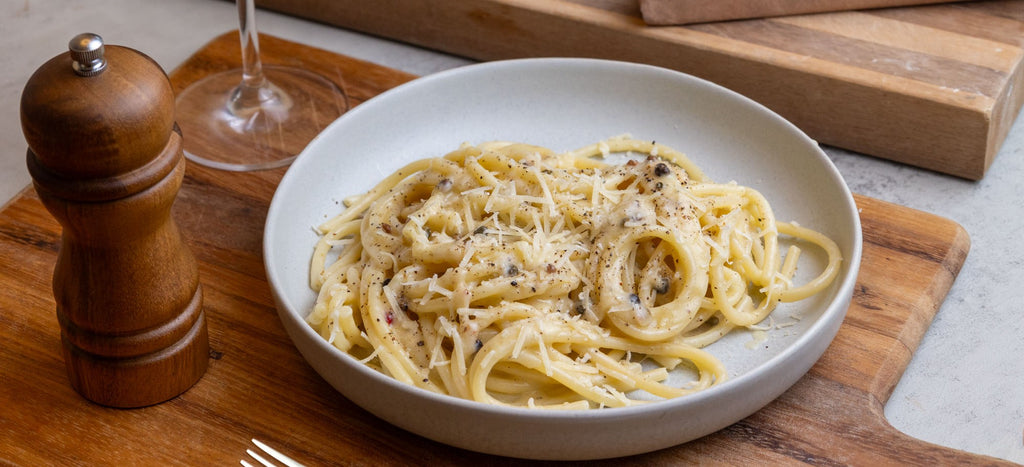From Rome, with love: here's how to make a perfect Cacio e Pepe.
When it comes to the beautiful simplicity of Italian food, Cacio e Pepe could be the posterchild. It translates to "cheese and pepper," which is really all you need other than some pasta and butter to make this deliciously minimal pasta.
While the history of Cacio e Pepe dates back to the Roman empire, Cacio e Pepe took the world by storm with a sudden jolt of popularity in the early 2010's - it was virtually nonexistent in the US until then! Chef Evan Funke first put it on a menu at his Santa Monica restaurant Rustic Canyon in 2008, Anthony Bourdain ate a bowl of it on the Rome episode of No Reservations in 2010 while singing its praises, and the rest was history. It became a culinary obsession, and we know why: for such a small amount of ingredients that go into the dish, the result is a bit magical.
While it was a booming trend in the world of gastronomy, Cacio e Pepe is a beloved mainstay in Roman culture - it's one of the 4 quintessential pastas of the region. It's never going out of style to us, and this is how you can make a perfect Cacio e Pepe at home.
First things first, what ingredients are in Cacio e Pepe? Pasta, salt, pepper, Parmigiano or Pecorino, and butter (we're pro-butter in this recipe, but it's up for hot internet debate - some will tell you it's not traditional!) Oh, and pasta water - you have to save the pasta water!
1. Pick a curved pasta shape that'll grab hold of the sauce.
Customarily, Cacio e Pepe is made with hand-made tonnarelli pasta, which is about double the thickness of classic spaghetti. However, in a recipe such as this one that's all about the sauce, we believe it is best showcased with a shorter curved pasta shape that grab hold of the sauce in curves and twists instead of slipping off. This is the time to experiment with more interesting pastas, all while making the recipe all the more delicious.
2. Use the good cheese.
Whether you use Parmigiano, Pecorino, or a blend of the two, this is the time to splurge on the good stuff. That means getting actual Parmigiano Reggiano (not domestic Parmesan - learn the differences here!) and high quality Pecorino. This dish gets nearly all of its flavor from cheese, so it's worth the investment. It affects the texture, too - oftentimes domestic Parmesan doesn't melt properly into a sauce, which can leave you with a globby, congealed mess. The exact opposite of the creaminess you want in a perfect Cacio e Pepe!
3. Lots of pepper - freshly ground!
It's called cacio and pepe for a reason, after all. Don't skimp on the pepper, and use freshly ground - it's so much more flavorful than pre-ground pepper.
4. When the pasta goes in, shut off the heat.
Giada swears by this trick. It ensures the cheese doesn't overheat on the stove and become grainy in texture - let the residual heat from the pan melt everything perfectly into a silky sauce.5. Save - and use - a lot of pasta water.
The magic of this dish comes from the starches of the pasta water, and how it emulsifies with cheese and butter to create a velvety, creamy cheese sauce. Save plenty of water (at least 1 1/2 cups) for this recipe - you'll need it. Our tip? Use a pasta spider or slotted spoon to transfer the noodles directly from the pot of water to the sauce pan. No draining into a colander necessary, and you're left with hot pasta water in your pot to use accordingly.It's time - tap here or scroll down to get the simple recipe!























0 comments